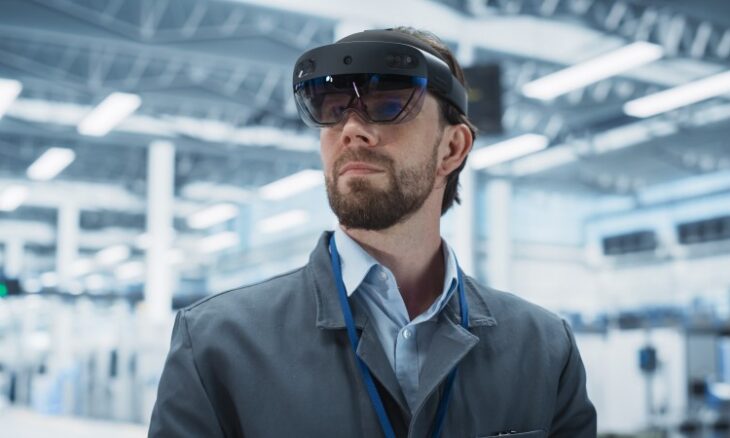Galaxy XR Enters the Market to Rival Apple and Meta
Samsung and Google have introduced the Galaxy XR headset at a price of $1,799, positioning it directly against Meta’s Quest series and Apple’s Vision Pro. The device arrives alongside Android XR, signalling a joint attempt to redefine mixed reality through a broader and more open ecosystem. The offering sits between the affordability of Meta’s products and the high-end positioning of Apple’s devices, yet this balanced pricing is accompanied by a major obstacle: Google’s spatial video tools remain unfinished, weakening the entertainment experience the companies intend to promote.
The headset’s technical specification appears impressive at first glance. It uses dual 4K micro-OLED panels that deliver 3,552 by 3,840 pixels per eye, amounting to over 27 million pixels. Despite its visual ambitions, the device remains surprisingly light at 545 grams, making it far more comfortable than Apple’s heavier Vision Pro, which ranges from 750 to 800 grams depending on configuration. That focus on comfort indicates a strategic attempt to appeal to users who plan to spend longer periods within mixed reality environments.
Performance specifications point towards meaningful improvements over previous generations. Qualcomm’s Snapdragon XR2+ Gen 2 platform claims notable CPU and GPU gains. However, benchmark comparisons reveal a significant gap, with the Galaxy XR falling well behind Apple’s M5 chip. The difference underscores the difficulty of competing with Apple’s proprietary hardware advantage, even when Samsung and Google deliver meaningful enhancements over their prior efforts.
Visual quality plays a central role in the device’s entertainment ambitions. The headset supports 95 percent of the DCI-P3 colour gamut and provides a wide field of view measuring 109 degrees horizontally and 100 degrees vertically. These characteristics set the stage for detailed films, vivid sports coverage, and immersive gaming. Yet this promise remains hindered by the lack of high-quality spatial content. The display hardware appears ready for demanding media, but the surrounding software ecosystem cannot currently match its potential.
Android XR brings a substantial advantage through the immediate availability of standard Android applications in virtual space. This approach bypasses the restricted pipelines of competitors by offering users access to an extensive library of familiar apps. The presence of major streaming services further strengthens the launch position, granting the Galaxy XR support that competing headsets, including Apple’s, still lack in some cases. Developers also face fewer barriers, as Android XR works directly through Android Studio and integrates with major development frameworks.
Google’s own services enhance this breadth. Google Photos introduces AI-based depth conversion for images, while Google Maps enables detailed three-dimensional landscapes. The combination reinforces the notion that Samsung and Google aim to create a broad spatial computing platform rather than a niche entertainment device.
Gemini AI integration appears to be the defining software feature. The system responds without wake words and adapts to user behaviour, making recommendations and adjusting settings based on context. It supports gameplay, offers translation, and interprets scenes using multiple onboard sensors. This pervasive AI presence helps compensate for weaker spatial content by transforming traditional media and interactions into more dynamic experiences.
However, Google’s spatial video capabilities remain the major limiting factor. AI-driven conversion from 2D to 3D struggles to match the fidelity of footage captured using specialised spatial recording tools. Apple’s seamless link between iPhone capture and Vision Pro playback highlights the contrast. Meta, meanwhile, has already deployed AI-enhanced spatial transformations across its social platforms. Google’s reliance on conversion introduces inconsistencies, and compatibility issues further complicate the situation. Some Galaxy devices can upload spatial photos to Meta’s ecosystem, yet spatial videos fail to transfer reliably, leaving Samsung without a cohesive end-to-end solution for its own users.
Market positioning could still reshape the competitive landscape. Priced at just over half the Vision Pro, the Galaxy XR offers a premium feel without Apple’s luxury pricing. This middle-ground placement introduces new pressure on both established players. Meta may need to expand its focus beyond gaming, while Apple could be pushed to revisit its pricing or broaden its approach to mass-market adoption.
Samsung’s cautious initial production, which sold out quickly, suggests a measured rollout rather than a full-scale market push. Early estimates indicate that the device costs under $1,000 to manufacture, giving Samsung room to adjust prices if it seeks faster adoption.
The Galaxy XR demonstrates that Samsung and Google can deliver strong hardware supported by a flexible platform. Its comfortable design, sharp visuals, and AI-driven intelligence differentiate it from rivals. Android XR’s extensive app support offers immediate utility, while Gemini hints at an evolving future for spatial computing. Yet the shortcomings of Google’s spatial video tools weaken a core selling point. Until this gap is resolved, the Galaxy XR stands as a capable preview of what the companies hope to build rather than a fully realised entertainment powerhouse.
If Google rapidly closes this content deficit, the device may help usher in a new phase for mixed reality, supported by open platforms, accessible pricing, and integrated AI. If progress remains slow, the headset will serve as a reminder that even advanced hardware cannot overcome an ecosystem still waiting to mature.










